VR Language Learning through Simulated Classrooms and AI Chatbots
University of Helsinki
Doctoral Programme in Language Studies
(HELSLANG)
Avishan Keshavarz
Supervised by:
Dr. Niina Hynninen
Professor Sanna-Kaisa Tanskanen
Dr. Kaisa Hahl
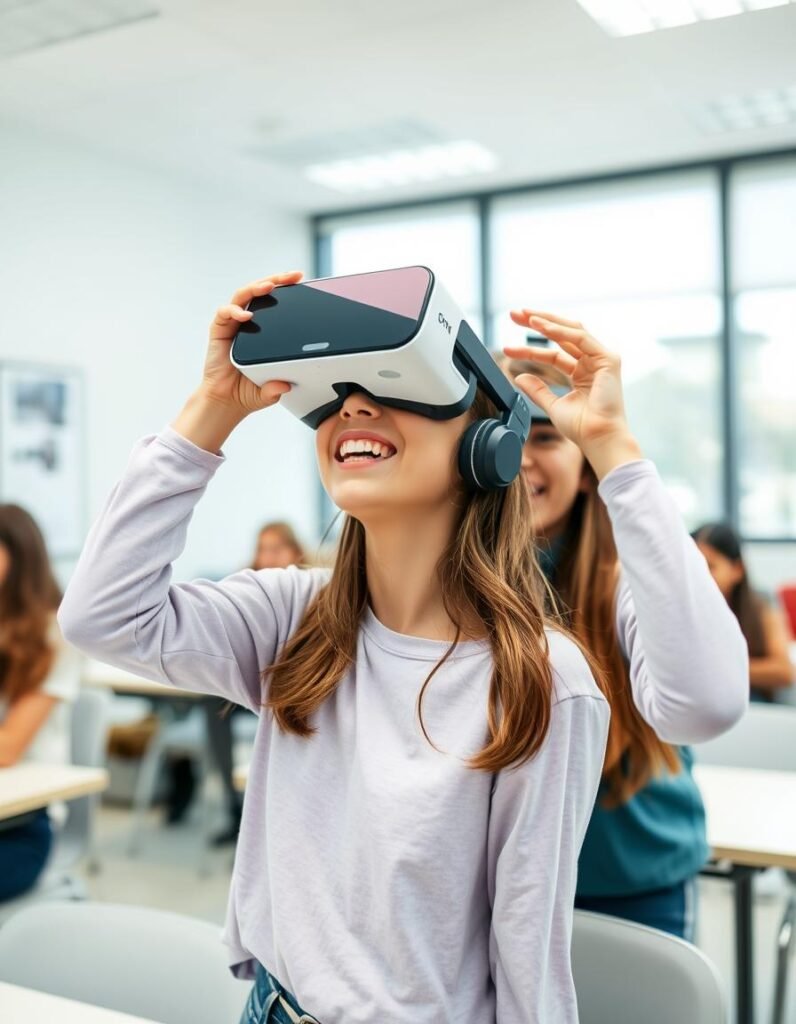
Overview
Inspiration
- Finnish NCC focus on promoting multilingualism andmulticulturalism in foreign language learning
- Ungspråk questionnaire
- Rapid technological advancements
- Global communication need
Aims
- Exploring multilingual identity and interculturalcompetence in secondary students in Finland
- Encouraging the use of VR tools in basic education inFinland
- Designing simulated ELF scenarios
Previous studies
Ungspråk project- Researching Multilingualism and Multilingual Identity in Lower Secondary Schools (Haukås et al., 2021), University of Bergen
- Explored the link between multilingual identity and intercultural competence in Norwegian secondary students
- Developed the Ungspråk questionnaire (Pre and post-test)
- Longitudinal, mixed-methods research
- Semi-structured interviews with teachers on multilingualism, multilingual identity and intercultural competence
Previous studies
Promoting Intercultural Competence in a Learning Activity Supported by Virtual Reality Technology (Shadiev et al., 2020)
- Explored how VR develops intercultural competence in language learning in higher education
- Designed a VR intercultural learning activity
- Mixed-methods research
- Questionnaires and interviews investigated students’ perceptions
Previous studies
VR-Technology in Teaching: Opportunities and Challenges (Graeske & Sjöberg, 2021), Luleå University of Technology
- Examined motivation and learner engagement in high school Swedish learning (reading and writing)
- Action-based research
- Teacher-researcher collaboration in planning
- Questionnaires on students’ reflections of using VR
- Semi-structured interviews on teachers’ reflections
Previous studies
VR environment as a diversifier of distance learning- Interaction of American and Finnish students of the Finnish language in an international classroom (Räsänen, E. & Lampela, J., 2023), University of Jyväskylä
- Explored pedagogical impact of VR in learning and teaching language and communication skills
- Action-based research (task-based language activities)
- Finnish upper secondary school students and undergraduate American Finnish learners
- Exposed learners to culturally immersive VR content (Wonda VR software tool)
Previous studies
Designing a VR Speech Simulation Game for Foreign Language Learning and Teaching (Partanen et al., 2024), Lapland University of Applied Science, Uppsala University, Stockholm University
- Examined developing Finnish and Swedish speaking and listening skills in higher education
- Design-based, multidisciplinary research
- Designed a VR immersive, 3D game using speech-to-text technology
- Collaboration of language teachers and a software engineering lab
Evolution of VR in education
Figure 1. Evolution of virtual reality in education.
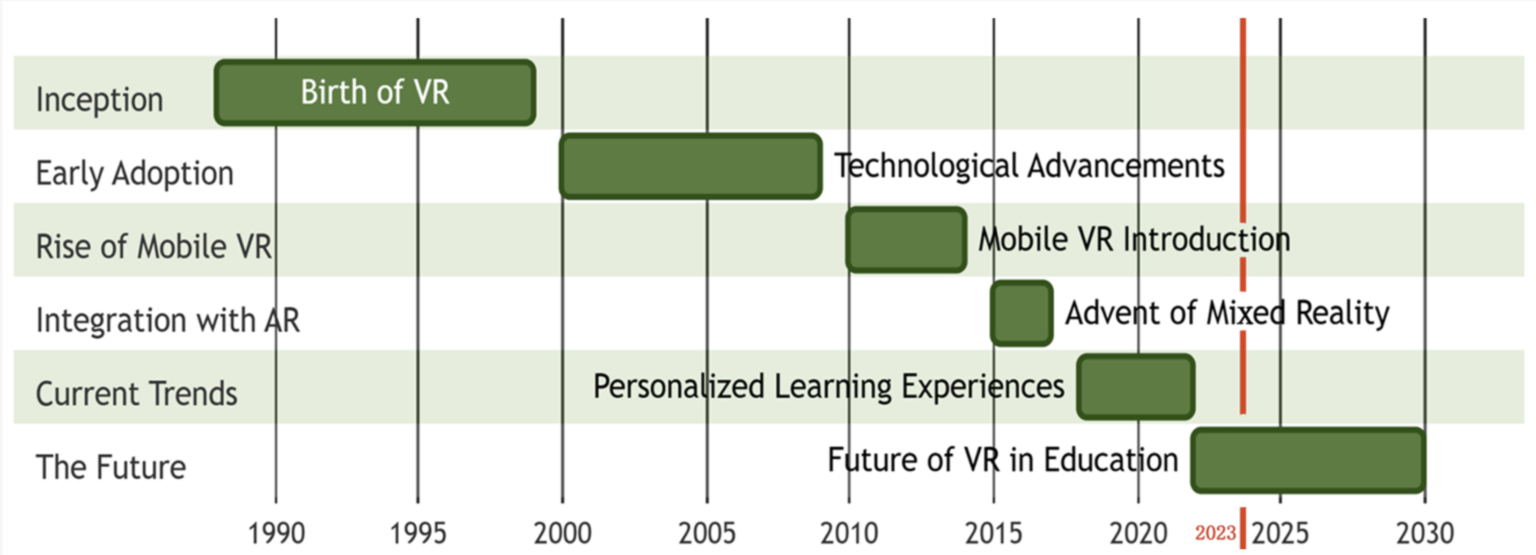
VR potential
- Simulates real-life communication scenarios
- Offers multisensory fully immersive learning
- Enhances engagement and retention
- Provides personalized learning
- Supports distance learning

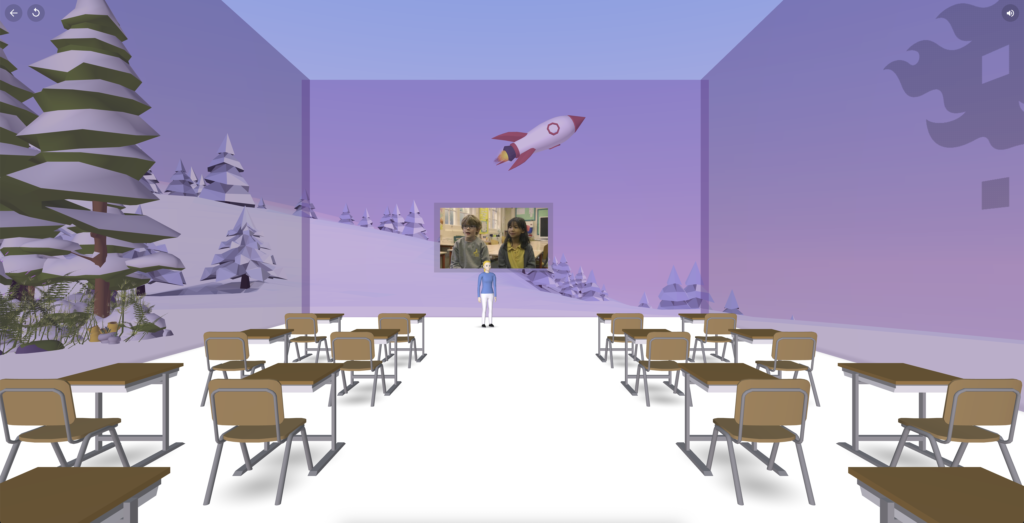
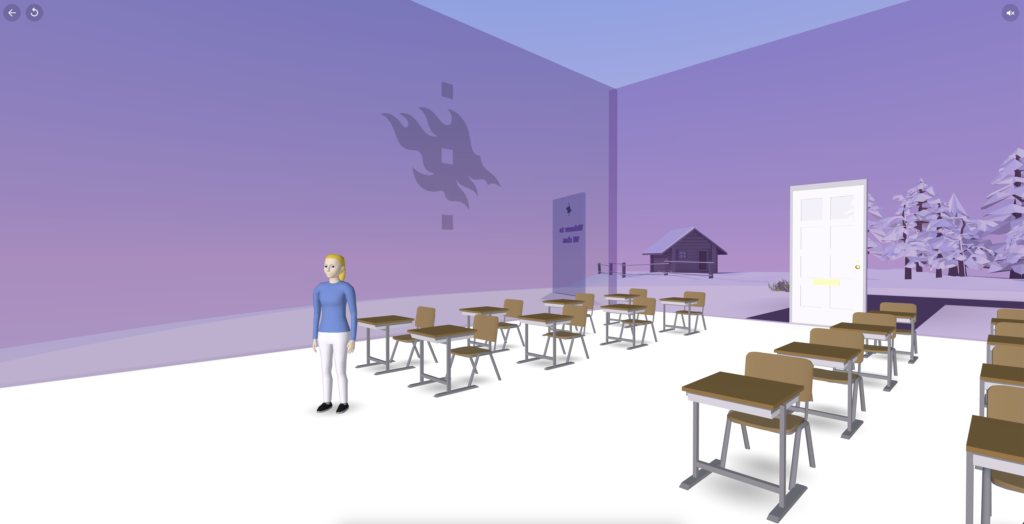
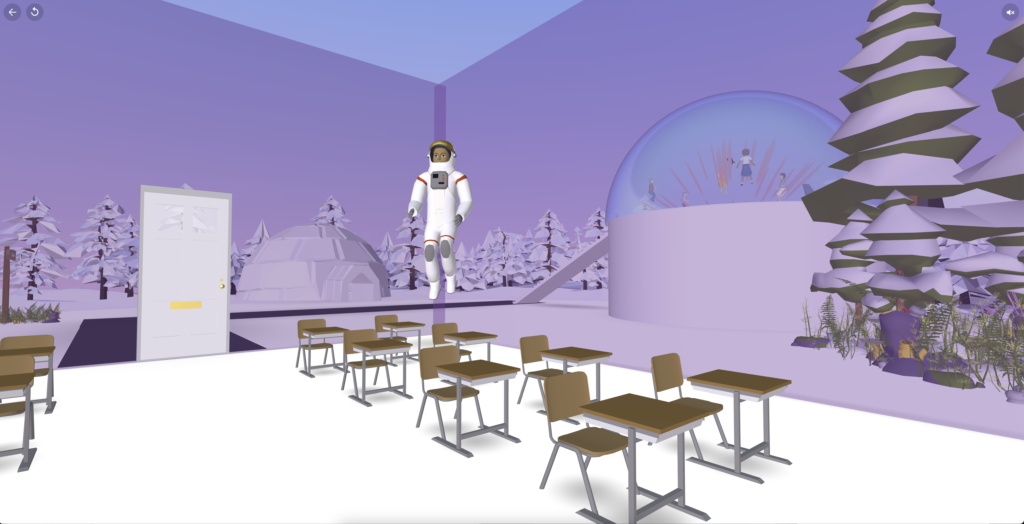

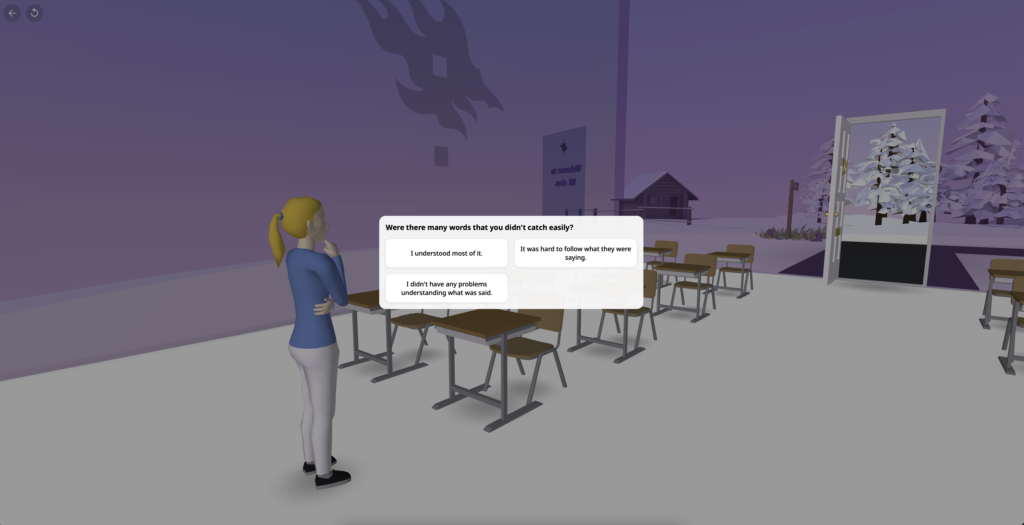
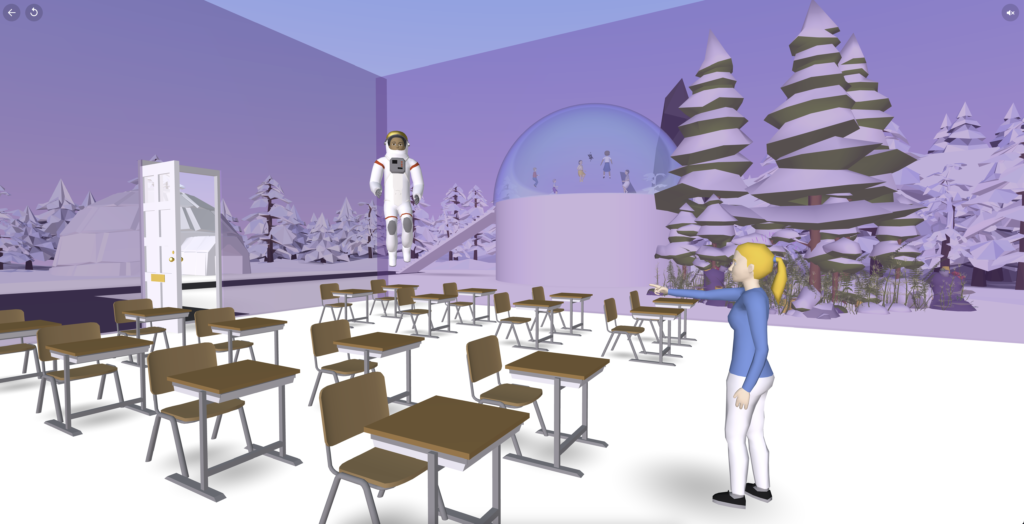
Research Questions
Data collection
Ungspråk questionnaire
• Adapted to the Finnish educational context
• Administered before the experiment
• Explores students’ insights on their multilingual identity and their cultural competence
• Participants: Year 8 students
VR Intervention
• Explores perceptions of students and teachers on simulated lessons
• Record, and analyzes chatbot interactions for student engagement
• Participants: Year 8 students and English teachers
Interviews and observations
• Semi-structured interviews with teachers and students
• Researcher observations during VR lessons
Pilot test
• A demo simulated lesson will be designed and tested
• Questionnaires will be tested for validity and reliability
Simulated lessons
- ClassVR headsets
- 3D simulated classrooms
- AI chatbots
- Develop 3D teacher-directed lessons
- Create exposure to varieties of English accents
- Use multimodal interactive materials
- End of lesson AI chatbot sessions
- Reinforce learning objectives
- Promote language use and engagement
- Promoting multilingual, multicultural awareness
- Encouraging use of VR technology in language learning
- 20-minute VR lessons
- 10-minute AI chatbot practice sessions
- 4 lessons covering targeted learning objectives
Limitations
Technical challenges
- Practicality of VR devices
- Participant withdrawal
Content Design
- Multimodal content design
- Limited available resources
Scalability
- Number of participants
- Duration of the interventio
Solution
Technical challenges
Selection of VR devices designed for education
Considering alternative computer/tablet usage
Content Design
Collaboration with teachers
Use of AI tools
Scalability
- Employing an experimental and control group
Providing a fundation for future longitudinal studies
Intrested researchers and teachers are Wellcome to help me in shaping the future of learning
References
Akdere, Mesut, Acheson-Clair, Kris & Jiang, Yeling. (2021). 10.1016/j.ijintrel.2021.03.009.
Fisher, L., Evans, M., Forbes, K., Gayton, A., & Liu, Y. (2020). 10.1080/14790718.2018.1524896.
Graeske, Caroline & Sjöberg, Sofia. (2021). 10.5539/ies.v14n8p76.
Haukås, Åsta & Storto, Andre & Tiurikova, Irina. (2021). 10.5278/ojs.globe.v12i.6500.
Opetushallitus. (2014). National core curriculum for basic education 2014
Partanen, R., Valijärvi, R-L., Rajaniemi, P., Grönstrand, H., and Jalonen, J. (2024). https://urn.fi/URN:NBN:fi-fe2024080764037.
Räsänen, E., & Lampela, J. (2023). Kieli, koulutus ja yhteiskunta, 14(4).
Shadiev, Rustam & Wang, Xueying & Huang, Yueh. (2020). 10.19173/irrodl.v21i3.4752.
Tiurikova, Irina & Haukås, Åsta & Storto, Andre. (2021). 10.46364/njltl.v9i2.945.